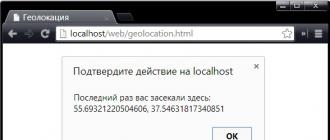Greetings!
The speed and performance of the entire personal computer as a whole depends on the performance of the disk (HDD, SSD)! However, to my surprise, quite a large number of users do not attach due importance to this aspect. And this despite the fact that the speed of loading the operating system, launching programs, copying files and data from disk and vice versa, directly depends on the data carrier. In other words, a fairly large number of typical operations on a PC are tied to the memory subsystem.
Now in computers and laptops, either traditional HDDs (hard disk drives) or the recent trend - SSDs (solid-state drives) are installed. Often, SSD drives significantly outperform classic HDDs in read / write speed. For example, Windows 10 starts up in 6..7 seconds, compared to 50 seconds of boot from a conventional HDD - as you can see, the difference is quite significant!
This material will focus on ways to check the speed and performance of an installed HDD or SSD drive.
CrystalDiskMark Program Review
Quite a popular utility for measuring and testing the speed of an HDD or SSD disk. It works fine in Windows (XP, Vista, 7, 8.1, 10), is free and supports Russian interface language. Official website of the program: http://crystalmark.info/

To test an HDD or SSD in CrystalDiskMark, you need to do the following:
1) Select write / read cycles. By default, this figure is 5 , which is the best option.
2) Then you need to select the size of the file to be recorded during the test. 1 GiB (1 Gigabyte) will be optimal.
3) Finally, you need to select a partition that will be used to test the disk. If you have several physical disks installed, then select the partition that is located on the disk you are interested in. In the example, the installed hard disk is one and the partition is selected accordingly C: \\.
4) To start the test, click on the green button All... By the way, in the overwhelming majority of cases, the result is of interest, which is in the line SeqQ32T1 - linear read / write speed. You can start testing only linear read / write speed by clicking the corresponding button.

Test results will be displayed in columns:
Read - parameter showing the speed of data reading from the tested disk.
Write - a similar parameter, but showing the write speed to the tested hard disk.
On the Kingston UV300 SSD tested in the example, the linear read speed was 546 MB / s - which is a very decent result. In general, for the best representatives of SSD drives, this parameter varies around 500 .. 580 MB / s, taking into account the connection to the SATA3 connector on the motherboard.
If the speed of your SSD is significantly less than the speed declared by the manufacturer, then it makes sense to check if it is SATA3.
How to determine the version and operating mode of the SATA port
CrystalDiskMark developer has prudently created another diagnostic utility - CrystalDiskInfo. Its task is to display S.M.A.R.T information about the state of the disk, its temperature and other parameters.
In general, it is a fairly convenient and intuitive utility that should be in service with users who need to monitor the state of the disk (its health) in order to avoid data loss due to its possible failure.

After starting the utility, look at the information that is displayed in the line “ Transmission mode»:
SATA / 600 - means that the disk operates in SATA3 mode with a maximum bandwidth of 600 MB / s.
SATA / 300 - this parameter means that the disk operates in SATA2 mode with a maximum bandwidth of 300 MB / s.
It can still be highlighted SATA / 150 (150MB / s) - this is the first version of the SATA standard and it is considered very outdated and does not meet modern requirements for the bandwidth of connected media.
Whereas a classic HDD is enough SATA2 (300MB / s), then the SSD must be connected to the port SATA3otherwise he will not be able to reveal his full speed potential.
AS SSD Benchmark Review
I present to your attention another notable utility, the task of which is to test the speed of an HDD or SSD drive installed in a computer or laptop. With it, you can just as easily find out the speed characteristics of the connected disk.

The utility is free, does not require installation and works in Windows environment. Official website of the program: http://www.alex-is.de/
Management is carried out in a similar way to the CrystalDiskMark program. Linear reading speed is displayed here in the graph Seq.
HD Tune software overview
The HD Tune utility concludes this review. The capabilities of this program are not limited by testing the read / write speed. Among other things, it also allows you to check the health of the hard disk, its technical parameters and even scan the disk surface for errors.

If we focus on the speed testing capabilities, then here we can note the following:
- the ability to separately set testing for writing or reading
- convenient visual graph of the read / write speed during testing
- the ability to see the peak speed and access time
The program works in a Windows environment and provides convenient tools for monitoring and testing connected media.
Official website of the program: http://www.hdtune.com/
Short summary
The speed of the connected media directly affects the overall performance of your computer or laptop. Do not neglect the control of speed characteristics, because the overall comfort of working with a computer depends on it.
Now you know how to check the speed of the connected media, as well as the possible nuances of its connection, on which the bandwidth of the connected HDD or SSD ultimately depends.
When evaluating the performance of hard drives, the most important characteristic is the data transfer rate. However, a number of factors affect speed and overall performance:
- Connection interface - SATA / IDE / SCSI (and for external drives - USB / FireWare / eSATA). All interfaces have different baud rates.
- The size of the cache or buffer on the hard drive. Increasing the buffer size increases the data transfer rate.
- Support for NCQ, TCQ and other algorithms to improve performance.
- Disk volume. The more data you can write, the more time it takes to read the information.
- Density of information on the plates.
- And even the file system affects the data exchange rate.
But if we take two hard drives of the same size and the same interface, then the key performance factor will be spindle rotation speed.
What is a spindle
The spindle is a single axis in the hard disk, on which several magnetic plates are installed. These plates are fixed to the spindle at a strictly defined distance. The distance should be such that when the platters rotate, the read heads can read and write to the disk, but at the same time.
For the disc to function properly, the spindle motor must be able to keep the magnetic platters running steadily for thousands of hours. Therefore, it is not surprising that sometimes disk problems are related specifically, and not at all with errors in the file system.
The motor is responsible for spinning the platters, and this allows the hard drive to run.
What is spindle speed
The spindle speed determines how fast the platters rotate during normal hard drive operation. Rotation speed is measured in revolutions per minute (RpM).
The rotation speed affects how quickly the computer can retrieve data from the hard drive. Before the hard drive can read the data, it must first find it.
The time it takes to go to the requested track / cylinder is called seek time (seek latency)... After the read heads move to the desired track / cylinder, wait until the plates turn so that the required sector is under the head. It is called rotational latency timeand is a direct function of the spindle speed. That is, the faster the spindle speed, the less the rotation delay.
The total seek time delays and rotation delays determine the speed of data access. In many programs for estimating hdd speed, this parameter access to data time.


What affects the spindle speed of the hard drive
Most standard 3.5 ″ hard drives today have 7200 rpm spindle speeds. For such disks, the time during which half a revolution is completed ( avg. rotational latency) is 4.2 ms. The average seek time for these drives is about 8.5 ms, which allows access to data in about 12.7 ms.
WD Raptor hard drives have a rotational speed of the magnetic platters of 10,000 rpm. This reduces the average spin delay time to 3ms. The "raptors" also have smaller diameter plates, which made it possible to reduce the average search time to ~ 5.5 ms. The resulting average data access time is approximately 8.5 ms.
There are several SCSI models (for example, the Seagate Cheetah) that have spindle speeds up to 15,000 rpm, and their inserts are even slower than the WD Raptor. Their average rotational latency is 2 ms (60 sec / 15,000 RPM / 2), the average seek time is 3.8 ms, and the average data access time is 5.8 ms.
Discs with a high spindle speed have low values \u200b\u200bof both seek times and spin delays (even with random access). Understandably, 5600 and 7200 spindle drives have lower performance.
At the same time, with sequential access to data in large blocks, the difference will be insignificant, since there is no delay in data access. Therefore, it is recommended to regularly defragment hard drives.
How to find out the spindle speed of a hard drive


On some models, the spindle speed is written directly on the sticker. It is not difficult to find this information, since there are few options - 5400, 7200 or 10,000 RpM.
Computer performance depends on the literacy and speed of the hard disk. Over time, or immediately after purchase, the user may have a suspicion that the HDD or SSD drive is operating at low speed, which is why data from them is read "with brakes." There is no tool in Windows to check the speed of a hard drive. At the same time, there are enough third-party solutions, and below we will consider the work of the two most popular programs for testing a hard drive - CrystalDiskMark and HD Tune.
How to check hard disk speed with CrystalDiskMark
CrystalDiskMark is the simplest and most convenient application when you need to check the speed of your hard drive or solid state drive. The functionality of the program is small, but it does not require installation, if you download it from the official website of the developers. You need to download the application, depending on the bitness of the operating system used on the computer.

The advantage of the application is the support of the Russian language, while it is required to give some explanations for its operation. After launching the program, the user will see 5 green buttons, each of which performs a specific set of tests:
- All. By clicking this button, the application will conduct all the checks that it is capable of;
- Seq Q32T1. The utility will test sequential read / write execution in one thread with a depth of 32;
- 4K Q32T1. The utility will test random read / write execution in a single stream with a depth of 32 4K blocks;
- Seq. The utility will test sequential read / write execution in one thread with a depth of 1;
- 4K. The utility will test random read / write execution in a single stream with a depth of 1 4K blocks.
For reference: Q32T1 - indicates the number of simultaneous threads and the queue depth. If necessary, these indicators can be changed in the program settings.
In addition to choosing how to test your hard drive or SSD, you can set other parameters. The following options are selected at the top of the CrystalDiskMark application window:

Important: Before testing the hard drive with CrystalDiskMark, it is recommended that you close all applications that may affect the speed of the drives. Particular attention should be paid to downloading various files from the Internet, for example, torrent trackers.
According to the results of testing the hard disk with the CrystalDiskMark program, the user will see information in the Read and Write columns for the selected tests (or for all at once).

The most interesting, from the point of view of daily use of the computer, are the second and fourth lines, because rarely in the process of work there is a sequential execution of reading and writing information.
How to check your hard drive with HD Tune
HD Tune has significant differences from CrystalDiskMark in terms of functionality. If the above program can only test the read and write speed of disks, then the HD Tune application can also tell you about the temperature of the drive, access time, processor load level, serial number of HDD or SSD, and much more. The program is available in two versions - paid and free. For a standard check, a free version is enough, which can be downloaded from the developers' website. Once downloaded, HD Tune will need to be installed on your hard drive, unlike CrystalDiskMark.
HD Tune is able to offer several types of tests, as well as provide various information about the disc in 4 tabs:

It is worth noting that before testing the disks with HD Tune, it is also recommended to reduce the load on them as much as possible by closing applications, antiviruses, etc., which may load them.
Hello dear friends! Artyom Yushchenko with you.
SATA1 standard - has a transfer rate up to 150Mb / s
SATA2 standard - has a transfer rate up to 300mb / s
SATA3 standard - has a transfer rate up to 600mb / s
I am often asked why, when I test the speed of my disk (and a disk, for example, the SATA2 interface and the motherboard has a port of the same standard), the speed is far from 300mb / s and, moreover, not in a big way.
In fact, the speed of a SATA1 disk does not exceed 75MB / s. Its speed is usually limited by mechanical parts. Such as the spindle speed (7200 rpm for home computers), and also the number of plates in the disk. The more there are, the greater the delays in writing and reading data.
Therefore, in fact, no matter what interface of a traditional hard drive you use, the speed will not exceed 85 MB / s.
However, I do not recommend using IDE drives in modern computers because they are already slower than SATA2. This will affect the performance of writing and reading data, which means there will be discomfort when working with large amounts of data.
Recently, a new SATA3 standard has emerged, which will be relevant for solid-state memory drives. We will talk about them later.
However, one thing is clear modern traditional SATA drives, due to their mechanical limitations have not even developed the SATA1 standard, but SATA3 has already appeared. That is, the port provides the speed but not the disk.
However, each new SATA standard still carries some modifications, and with large amounts of information they will make themselves felt in good quality.
For example, the function is constantly being improved - Native Command Queuing (NCQ) is a special command that allows parallelizing read write commands, for better performance than the SATA1 interface and IDE cannot boast of.
The most remarkable thing is that the SATA standard, or rather its versions, are compatible with each other, which gives us monetary savings. That is, for example, a SATA1 disk can be connected to a motherboard with a SATA2 and SATA3 connector and vice versa.
Not so long ago, the market for new drives, the so-called SSDs, began to develop (let me remind you that traditional hard drives are designated as HDDs).
SSD is nothing more than flash memory (not to be confused with flash drives, SSDs are ten times faster than conventional flash drives). These discs are quiet, they don't heat up much and consume little energy. They support read speeds up to 270MB / s and write speeds up to 250-260MB / s. However, they are very expensive. A 256 GB disk can cost up to 30,000 rubles. However, prices will gradually fall as the flash memory market develops.
However, the prospect of buying a 64GB SSD, for example, is very pleasant, because it works much faster than a regular disk on magnetic platters, which means that you can install a system on it and get an increase in performance when loading the operating system and when working with a computer. Such a disk costs about 5-6 thousand rubles. I'm thinking about such a purchase myself.
These drives fully disclose the SATA2 standards and they need the new SATA 3 interface like air than traditional drives. In the next six months, SSD drives will move to the SATA3 standard and will be able to demonstrate speeds up to 560 MB / s in read operations.
Not so long ago I got my hands on a 40GB IDE standard disk that was released more than 7 years ago (not mine, they handed it over to me for repair) I tested its speed characteristics and compared them with SATA1 and SATA2 standards, since I myself have both SATA disks standards.
Measurements were carried out using Crystal Disk Mark software, several versions. I found out that the accuracy of measurements from one version of the program to another is practically independent. The computer has a 32-bit operating system Windows 7 Maximum and a Pentium 4 - 3 GHz processor. The tests were also carried out on a processor with two cores Core 2 Duo E7500 overclocked to a clock frequency of 3.53 GHz. (nominal frequency 2.93 GHz). According to my observations, the processor speed does not affect the results of the speed of reading and writing data.
Here's what a good old IDE drive looks like, drives of this standard are still on sale.


This is how the IDE drive is connected. Wide ribbon cable for data transmission. Narrow white - food.

And this is how the connection of SATA drives looks like - red data transfer wires. And also on the photo you can see an IDE cable that connects to its connector.
Speed \u200b\u200bresults:

The speed of the IDE standard. It is equal to 41 MB for writing and the same amount for reading data. Next are the lines for reading sectors of various sizes in a variety of ways.

Read and write speed SATA1. 50 and 49 MB for read and write speeds, respectively.

Read and write speed for SATA2. 75 and 74 MB for reading and writing, respectively.
And lastly, I will show the results of testing one of the 4 GB moss flash drives from the excellent company Transcend. For flash memory, the result is not bad:

Conclusion: SATA1 and SATA2 (ranked first in the test) are the most preferred for use in a desktop home computer.
Sincerely, Artyom Yushchenko.
Hello! I guess it's no secret that one of the most important components inside your computer or laptop is the drive that contains the operating system. A logical consequence is the question of how to perform a hard disk speed test (or SSD, if the computer is fresher).
If your operating system is installed on a slow hard disk, then it does not matter how powerful your CPU or RAM is - Windows itself and installed programs will be very reluctant to start and you will not be able to enjoy full multitasking.
In the age of the Internet, there are a lot of publications that will tell you about almost any model of the drive on sale. In addition, there are a huge number of programs for testing the speed of a hard drive, the result of which will be an understanding of what your drive is capable of.
There are many paid utilities such as PCMark or PassMark that can test the entire system and quite often they can be found in tests from well-known publications. We're taking a different path and I'm going to show you four free ways to test the speed of your hard drive or solid state drive.
The real performance of an HDD or SSD in a Windows environment (and not only) is determined not only by the rotation speed of the magnetic disk or the memory of the drive chips, but also by many other important factors. The drive controller, the SATA version on the motherboard, the driver of the controller itself, the mode of operation (ACHI or IDE) - all this affects the performance of the disk subsystem (even CPU or RAM can affect performance)
Method 1. CrystalDiskMark is our main tool
Probably the most popular hard drive speed test tool is CrystalDiskMark. Almost no drive testing is complete without this utility - this situation will help you compare your results and draw the right conclusions. A big plus is the ability of the program to test not only HDD / SSD, but also flash drives and other storage media.
The application has both a distribution kit and a portable version that does not require installation. Download as usual on the official website (as always, I recommend portable).
Working with CrystalDiskMark is outrageously easy. We launch the utility, select the size of the test block (in the picture below we chose 1 GB), the number of test repetitions (I chose 5 - the more repetitions, the more accurate the result) and the drive itself. Press the "all" button and wait for the program to run all tests (by the way, you can run a separate test for each mode).

The screenshot on the left is the SSD speed test, and on the right is the HDD. Just so you know how big the difference is between them and how much performance gain you will get by replacing only one component in the system
Method 2. CrystalDiskInfo - detailed information about the HDD / SSD drive
At the very beginning of the post, I already wrote that the test of the speed of a hard disk or SSD will not be entirely correct if we do not find out the factors affecting the performance of the disk subsystem. The CrystalDiskInfo utility will tell you a lot of interesting things about your drive, but we are only interested in one nuance - download the application from the official website and run it.
Pay attention to the line "Transfer mode", in the picture below I have this (SATA / 600 | SATA / 600). These parameters must match, i.e. by connecting the SSD drive to the SATA / 300 port (this is the SATA II standard), we will get the maximum exchange rate with the disk of 300 MB, and if we look at the performance test in the first method, we see that the maximum read speed was far beyond 300 ...
By connecting such a high-speed drive to a SATA or SATA II port, its performance simply rests on the performance of the controller (with classic HDDs it is not so critical, since even SATA capabilities are abundant)

In general, CrystalDiskInfo can tell you about temperature, drive time and many other useful indicators. For owners of classic HDDs, the Reallocate Sector item will be useful - thanks to it, you can predict device failure
Method 3. AS SSD Benchmark - a healthy competitor to CrystalDisk from the Germans
The Germans know how to make not only adult films, but also excellent utilities for testing the speed of a hard drive or SSD. In this case, I want to introduce you to the AS SSD Benchmark application, the functionality of which is very similar to CrystalDiskMark, but in contrast to it, it also shows the access time to data (and in general there are still minor differences).
You can download from the official website (it is in German, the download link is at the end of the page), the application itself is in English (many bloggers have a version exclusively in German)
The utility is portable and does not require installation, just run the application, mark the necessary tests and press START, everything is the same as in the first method. On the left is my home SSD, on the right is a classic HDD.

Please note that the TOOLS menu has a couple of interesting tests that can predict the performance of the drive when copying ISO files, programs or various toys - CrystalDiskMark does not have such functionality.
Method 4. HD Tune is a good tool with visual graphics
HD Tune is probably the most famous hard drive speed test app, but it comes in last in today's rankings for a reason. The fact is that the free version of HD Tune has not been updated since February 2008 ... however, it still works in 2k17 on the newest Windows 10. Download, as always, from the official website (unfortunately, there is no portable version)
After passing the test, a visual reading graph will be available to us (along with the maximum and minimum values, as well as the speed of data access). In general, the information is useful, but there is no way to test the write speed on the disk, which is a little upsetting ...

In view of its antiquities the application may incorrectly detect modern drives, but this does not affect the test results
Conclusion about programs for testing hard disk speed
It's time to draw conclusions. We tested the speed of a hard drive or SSD using four different programs (or rather, there are only three applications for testing, and one more utility to be sure that the tests will be objective).
In reality, there are many more programs that allow you to check the speed of a hard drive, but I decided to introduce you to the leaders of this niche ... but if you have anything to add, I’m waiting for you in the comments.






